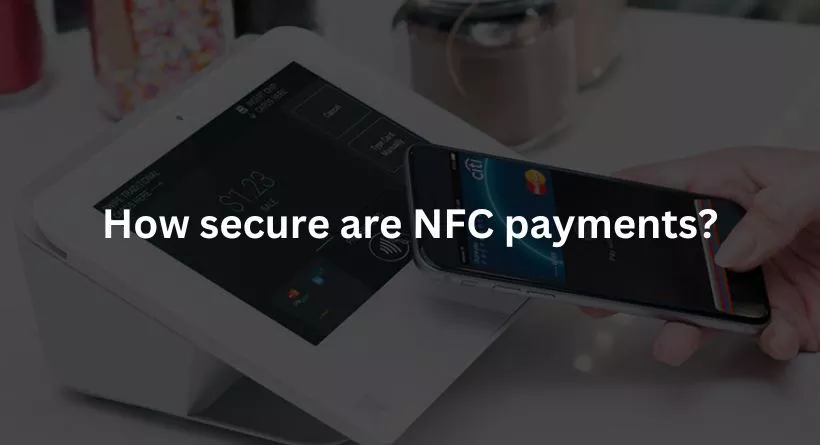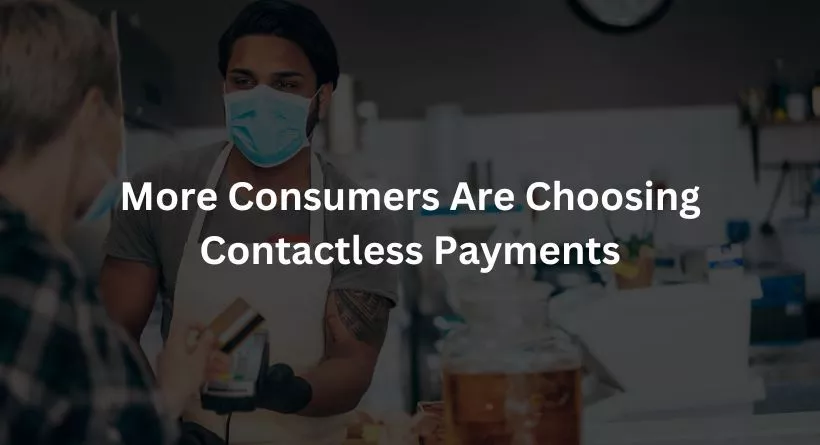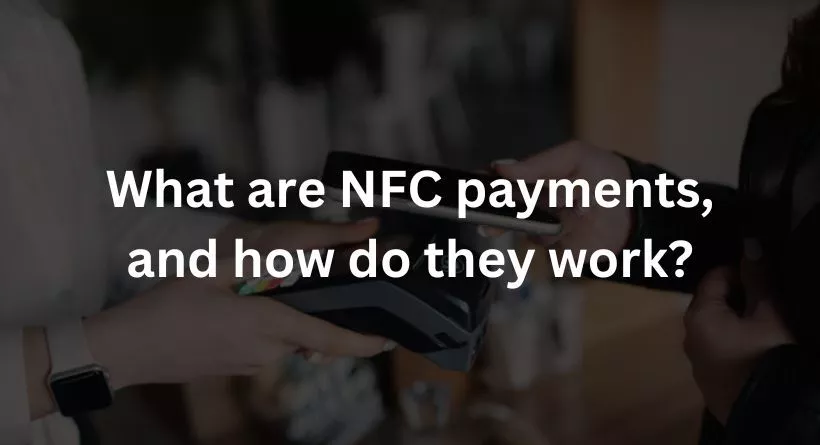There are what seems like an infinite number of methods to conduct a transaction in the world of payments today. You might be interested in learning more about near-field communication (NFC) payments and how you might be able to get started if your company isn’t already utilizing them. To find out more about the specifics and how NFC technology may help your business, keep reading below.
A brief history of NFC technology
Early in the new millennium, Sony and Philips developed NFC technology. It is based on radio-frequency identification (RFID), a related technology that uses radio waves and has been in use for some time.
When Speed pass was introduced in 1997, it allowed customers to pay for petrol at Mobil petrol stations using a key ring to make contactless payments. Since then, it has developed to now incorporate tags, cellphones, key fobs, stickers, and payment cards. Its widespread use can be ascribed to the fact that it eliminates the inconvenience of texting or swiping to make payments while yet providing a high level of security.
What is NFC technology used for?
NFC has numerous additional uses outside payments, which the majority of people may already be aware of.
- Small files can be shared across phones.
- Setup of wireless services
- Purchase tickets
- Location and venue check-in
- Lock doors on vehicles, rented vehicles, and workplaces
The benefits of using NFC technology for business are discussed below in relation to the payment industry.
What are NFC payments?
A method of that makes use of near-field communication is NFC payments. By exchanging data with another device, NFC wirelessly sends information from a smartphone, laptop, tablet, or other device. This technology enables contactless payments using a variety of methods, including contactless cards, Apple Pay, Samsung Pay, and Google Pay.
Mobile phones using NFC technology are used to make payments. Customers can make payments using methods like those listed above. However, not every phone has NFC technology, especially if it’s an older model.
How secure are NFC payments?

NFC payments are incredibly safe. In order to conduct a transaction, the gadget itself must be close to another NFC device and have the user’s permission. The transaction’s data are then digitally signed after that. Additionally, with mobile NFC payments, card numbers are replaced with instead of being utilized.
More information on the specific security characteristics of NFC technology is provided below.
NFC technology security features
Let’s start by examining the user’s device. The user may need to unlock the app on their device and choose the payment card they want to use in order to make a payment using an e-wallet. They can only finish a payment after that. But not all mobile gadgets fall under that category. The user can decide whether to add security measures to their device, such as password access or antivirus software.
The technological security features are another. NFC frequently employs a secure channel and encrypts delicate data, including credit card details.
Additionally, it’s critical for a customer to take into account the risk associated with keeping several credit or debit cards in a wallet or handbag. These are simple for fraudsters to utilize if they are stolen. However, carrying a smartphone that requires a fingerprint or Face ID to open is a more secure method of keeping payment information.
NFC technology security issues
No technology is risk-free. At Kevin, security is our first concern. Routed devices are not permitted for our NFC payment mechanism. Additionally, this method of payment prevents money from being taken from one account and transferred to another. To shift money, users must grant special authorization.
Nevertheless, not all NFC payment service providers operate in that manner. You should thus be aware of the hazards to your company.
How can merchants accept NFC payments?
A company must acquire the required hardware if it wants to begin taking NFC payments. That features a reader with NFC capabilities. Furthermore, they must cooperate with a payment system that can take this payment method, as Kevin does. Once they are set up, all a consumer needs to do to make a transaction is position their smartphone next to the reader.
How Kevin. Can help
Customers in utilizing digital payment options, such as those supported by NFC technology, and reducing their cash outlay. According to research, mobile wallets account for more than $13.3 trillion USD of all in-person transactions.
Business owners must be cautious not to fall behind with those types of data. They don’t have to be because of the ground-breaking POS solution from Kevin. Businesses may enjoy all the advantages while continuing to utilize the same gadget that their clients are accustomed to.
How Do NFC Payments Work?
The NFC chips will exchange encrypted data when a payment method and reader devices are close to one other and active.
Radio waves are used to establish a wireless connection between the two gadgets. This is comparable to RFID labels for radio-frequency identification. Stores, warehouses, and other wireless tracking applications employ these RFIDs.
All NFC chips operate on the same RFID radio frequency, but only if both NFC chips are positioned extremely closely to one another.
How to Accept NFC Payments
You will need an NFC-enabled reader for your payment terminal if you own a business and wish to be able to accept NFC payments. You must also have a credit card processing plan in order to accept payments via electronic wallets.
Processing costs for NFC transactions are often the same as those for card-present transactions. The precise cost will, however, change according on your plan and merchant account.
Key Takeaways
- The processing and acceptance of NFC payments is quick and safe.
- As a result, checkout times are shortened, customers have a better, more convenient experience, and security is improved.
- Are you seeking for further business guidance on anything from launching a new company to cutting-edge business procedures?
You may also like reading: 8 Paper Shredding Services + How Much They Cost
How Customers Pay With NFC
Customers can use a physical card with NFC technology incorporated to conduct in-person purchases. By inserting or tapping the card against an NFC-enabled payment terminal, they complete the transaction and the terminal obtains their payment data. Although EMV debit and credit cards are well-known examples, this technology is also utilized in access cards, school food or library cards, and access cards.
More Consumers Are Choosing Contactless Payments

Although 21.2% of US customers have shied away from contactless payments due to security worries, nearly half (47.2%) of them are now lured to contactless payments over traditional card transactions due to convenience.
57% of respondents to another study indicated they were more likely to conduct business with companies that accept contactless payments.
Top Concerns around NFC Payments
Despite the fact that NFC payments are becoming more popular, many shops and customers are still unable to use the new technology. According to the same NRF/Forrester report cited above, 67% of merchants are most concerned about the expense of adopting and accepting NFC payments, while 65% are worried about cybersecurity threats and 63% are worried about an increase in fraud.
According to a Radiant survey, perceived security concerns (21.2%) and prior unsuccessful efforts to use it (20.1%) are the top barriers that prevent reluctant customers from adopting NFC payments. Consumers who were surveyed say that at least half of their contactless payment attempts have failed.
NFC Payments Are Here to Stay
The majority of shops (94%) anticipate a rise in the use of contactless payments. Customers who made their first contactless phone or card purchase in May 2023 were 67% happy with the transaction and 57% said they would keep using the payment option even after the epidemic.
Research from 2023 World pay reveals that with the growing acceptance of mobile contactless payments, card usage is transitioning to pass-through mobile wallets. Globally, mobile wallet transactions accounted for 28.6% of all POS transactions, totaling more than $13.3 trillion.
Conclusion
To take NFC payments in your store or place of business, you need a reader that supports NFC payments. By obtaining inexpensive NFC payment readers from top-rated small company payment processors, startups and small to midsized stores may simply add this functionality.
Frequently Asked Questions
What is NFC technology?
NFC, often known as near-field communication, is a technology that permits communication between two devices. To complete contactless payments, it is frequently utilized.
Is NFC secure?
When it comes to payments, NFC offers an outstanding mix between security and ease. Since they have been widely utilized for more than ten years, technology and security requirements have advanced over time to guarantee that balance is maintained.
How do I accept NFC?
Businesses need to have an NFC-enabled reader in order to accept NFC payments. To execute the transaction, a consumer merely requires a mobile device that supports contactless payments.
What is an NFC tag?
A microchip transponder called an NFC tag can be used to send and receive data from close-by devices. NFC tags (or “chips”) are frequently included in cellphones and credit cards, but they also have other uses.
What’s the Difference between NFC and RFID?
NFC is a two-way communication technology that needs extremely near contact, whereas RFID (Radio Frequency Identification) is a one-way communication method that can be utilized at large distances. NFC is a subset of RFID that uses the same fundamental ideas and operates on a frequency comparable to RFID.

